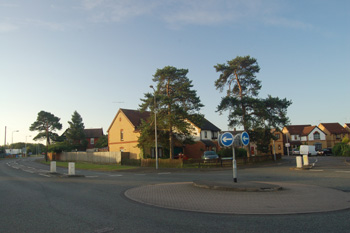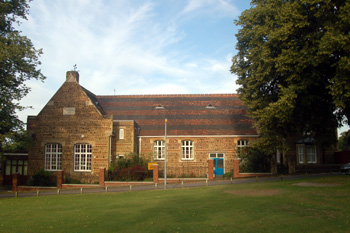Prehistoric Leighton Buzzard

The Chilterns looking east towards Cherrycourt Way June 2008
Old Stone Age
The earliest indication of any settlement in the area of what is now Leighton Buzzard comes in the form of a variety of palaeolithic stone tools found near the River Ouzel in the 19th and early 20th centuries. These may well have been washed down the river from other nearby sites. A quantity of palaeolithic tools was also discovered in the 1990s at a gravel pit in Bassett Road, again these may have been washed down the River Ouzel, or they may have been in situ [National Monument Record Number 1236782]. Also in the 1990s a quantity of palaeolithic implements was found at a gravel pit in Stanbridge Road between Marley Fields and Cherrycourt Way [NMR1236787].
Middle Stone Age
A mesolithic core, from which stone tools had been chipped, was found in the area of the, now disused, sand pit west of Grovebury Road. A few blades and flakes were found elsewhere in the town.
New Stone Age
A number of neolithic stone axe heads were found in the town in the late 19th and 20th centuries. Two arrowheads were found near Grovebury Road and a late neolithic or early Bronze Age scraper near Billington Road.

Bronze Age barrows near The Knolls in 1901
Bronze Age
The next evidence for early settlement in Leighton Buzzard itself comes from the Bronze Age from the area east of Plantation Road near The Knolls (which took its name from the barrows). A round barrow [NMR346516] and a bowl barrow [NMR 346519] lie together just south of the track from Sandy Lane to Plantation Road in the wooded area formerly known as The Plantation. The barrows lie on level ground and the remains of the bowl barrow extend to a width of about 65 feet and a height of 5 feet although a tennis court cut into it in the 1920s. A pottery incense cup was found in the vicinity. Until the middle of the 19th century these two barrows would have been in an isolated position until The Knolls was built but now lie partly in the grounds of that house and partly in other back gardens.
There is evidence of another barrow in Leighton Buzzard - at Grovebury, although the last traces disappeared through sand quarrying in the 1970s, like the two near The Knolls it stood on an upland position overlooking the River Ouzel. It was reused as the base of a windmill in the Middle Ages by Grove Priory and had the hollow mark of a post mill on its top until its destruction.

Pulford's VA Lower School June 2008
Iron Age
In 1949 a Gallic gold coin was discovered in the park near the present Pulford's VA Lower School [NMR346592]. Iron Age sherds were also found at the Chamberlain's Barn Dark Age cemetery [see below] in the 1930s. A number of other coins were found near Plantation Road and Billington Road.